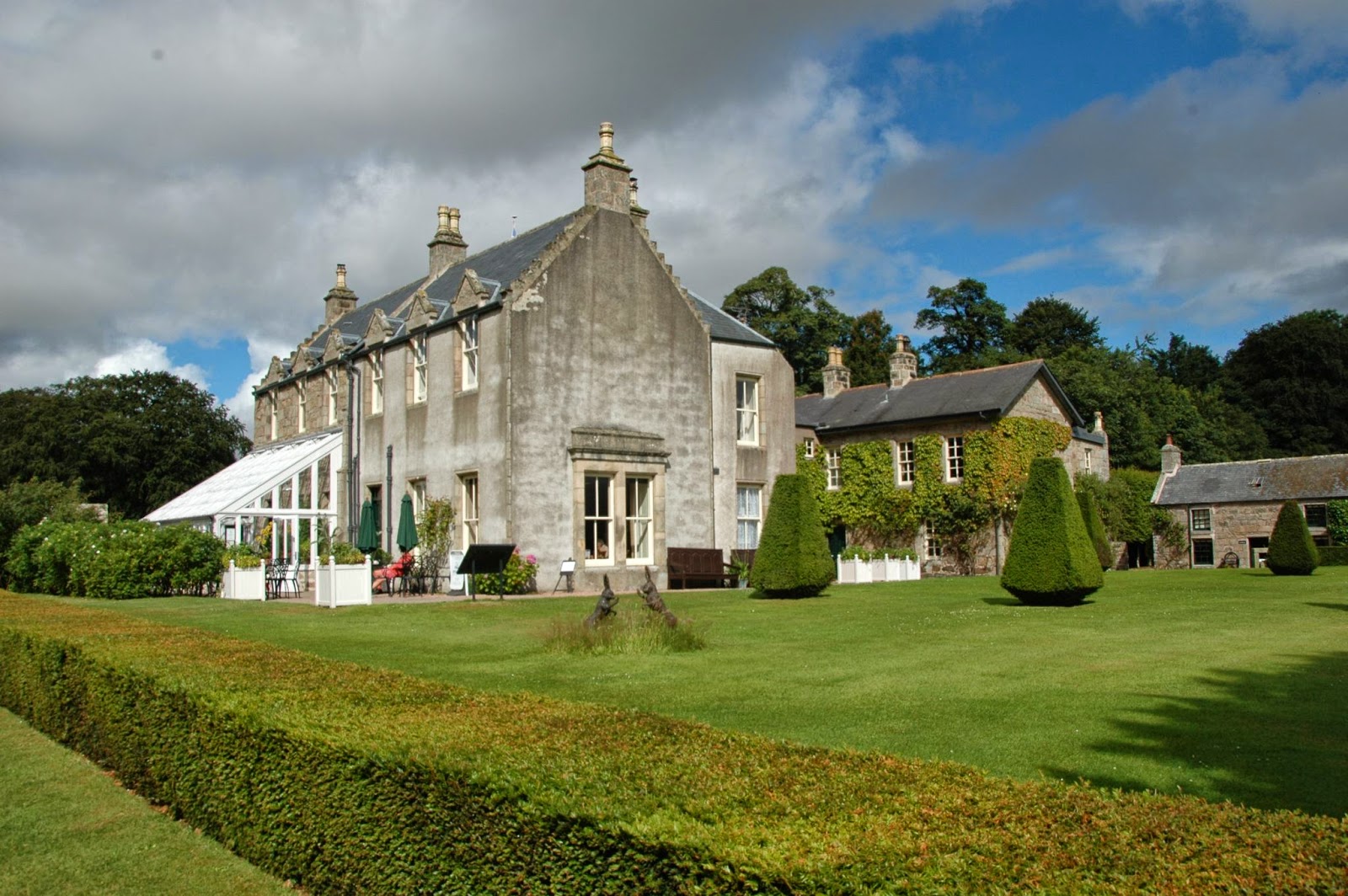Getting closer to Aberdeen. Out first port of call today — Pitmedden Garden, near the town of Pitmedden, about 15 miles north of Aberdeen. The 'Great Garden' was originally created in about 1675 by Sir Alexander Seton. Under successive owners, it ultimately became a magnificent working kitchen garden but, when the National Trust took it over in 1952, they determined to restore it to reflect its 17th century origin. They have certainly done that.
The Great Garden is the ultimate in formal gardens! It lies on two terraces, with a low stone balcony allowing you to look over the lower level. To the left and the right on the upper level are parterres, formally laid out gardens delineated by low box hedges and planted with colourful annuals to produce intricate designed patterns.
The lower garden — actually the true 'Great Garden' — has four of these parterres, each to a different design. Forming a corridor down the middle of the whole garden is a double line of yew trees, trimmed into pyramidical shapes. This last is not truly 17th century design — more 19th century — but the planned anachronism works well.
One thing that surprised us — there are no 'Keep off the grass' signs. In fact, you have to walk the immaculately manicured lawns, as these form the only paths through the gardens!
In talking to the head gardener, we found that Pitmedden has escaped the various plant diseases that have plagued other gardens by the simple expedient of raising all their own plants, getting nothing at all from outside suppliers. This policy has allowed them to maintain a garden that is totally exquisite.
There's a lot more to Pitmedden — a museum of farm life, walks round the large estate, and so on, but we mainly wanted to see the Great Garden, and when the rain came down, we decided to move on to Castle Fraser, about 15 miles southwest, about the same distance west of Aberdeen.
Castle Fraser is interesting. It began as a simple square tower house in the mid 1450s, and in the sixteenth century a square and a round tower were added at diagonally opposite corners, forming a 'Z' shape. The round tower disturbed Susie, as once you get inside, you find that all the rooms have been squared off to suit Victorian tastes! The castle has been in the hands of two branches of the Fraser family, and then recently, the Cowdrays. It came to the National Trust in 1976.
We toured the castle — this time is was self-guided, but with attendants in most of the rooms to fill out the history. One of its oddities — off the Laird's bedroom is a small room, which has ladder access to a listening hole opening out into the Great Hall — the 'Laird's Lug' — where he used to sit to eavesdrop on his guests!
The Great Hall itself has been put back to an earlier form, and is rather bare, being mainly a lime-washed barrel arch of stone, with parts of the raw stone being left exposed. This was much to the disgust of our guide here, who was rather partial to the Victoriana that had been collected in this room and its fabric — the organ which once blocked the west window, for example, has gone to a church in nearby Kemnay (where, presumably, is will get a more constant use).
After touring the castle, we went into its walled garden. This was (and still is) a kitchen garden, at least in part), and continued to supply the castle with fruit, vegetables and flowers. (Cut flowers are no longer used in the castle, partially because of the number of visitors with allergies, but also because their pollens and oils have unexpected effects on the conservation efforts within the castle.)
And then into Aberdeen. We were quite excited at the prospect of being able to use one of the two bus 'Park and Rides' to give us access to the city. We went to check them out. Height restricted, to 2.1 metres. Blast! The main thing we wanted to get into Aberdeen for was to replace Warren's main camera lens, whose auto-focus has finally failed! (Not that he can't use it manually!) But, Aberdeen, you have missed the boat, and we've decided to drop you from our itinerary — so we left for Drum Castle and Crathies Castle, stopping off for the night at Newmill Hill, a forest area on the A93 near Drum Castle.
Distance driven — today, 74 miles ( 119km ); to date, 5,162 miles ( 8,308 km )













No comments:
Post a Comment